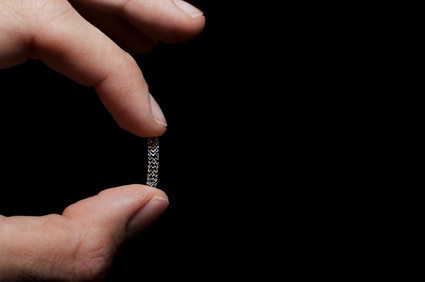Courtesy of the SBHCI.
 Guidelines recommend dual antiplatelet therapy for a year in patients admitted with coronary acute syndrome. However, patients at high risk for bleeding who receive coronary angioplasty have been historically excluded from studies. The new polymer-free stent BioFreedom allows for the reduction of dual antiplatelet therapy time, due to rapid drug elution into the vessel wall.
Guidelines recommend dual antiplatelet therapy for a year in patients admitted with coronary acute syndrome. However, patients at high risk for bleeding who receive coronary angioplasty have been historically excluded from studies. The new polymer-free stent BioFreedom allows for the reduction of dual antiplatelet therapy time, due to rapid drug elution into the vessel wall.
The study randomized patients at high risk for bleeding to receive the drug-coated stent BioFreedom or a corresponding conventional stent (bare metal stent). The primary safety endpoint was a composite of cardiac death, infarction, and definite or probable stent thrombosis. The primary efficacy endpoint was target vessel revascularization clinically justified at a year.
The study enrolled 662 patients; 33% of patients had diabetes and 84% were admitted with non-ST-segment elevation coronary syndrome. The BioFreedom stent was superior as regards both the primary safety endpoint (13% vs. 21.5%; p = 0.005) and the primary efficacy endpoint (5% vs. 10.4%; p = 0.009).
An analysis of separate safety endpoint components showed that the advantage of BioFreedom was driven by the rate of infarction (9% vs. 15.7%; p = 0.01), since all other components (cardiac death, definite or probable thrombosis, and bleeding) turned out to be similar.
Conclusion
Absolute differences observed at the 1-year follow-up were still present at 2 years. From a clinical point of view, conventional stents are not indicated in patients at high risk for bleeding with acute coronary syndrome anymore.
Courtesy of the SBHCI.

Original title: Leaders Free ACS: 2-Year Follow Up.
Presenter: Marie Claude Morice.
Get the latest scientific articles on interventional cardiologySubscribe to our weekly newsletter
We are interested in your opinion. Please, leave your comments, thoughts, questions, etc., below. They will be most welcome.





